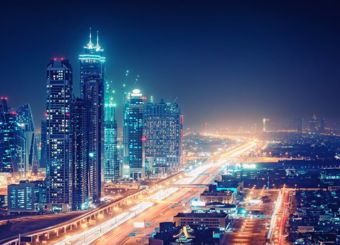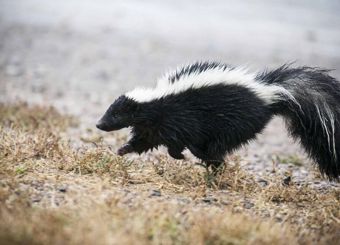Amazon drones will make deliveries as soon as 2022 – how will this impact supply chains?
The concept of airborn drones making deliveries has been theorized for years, but the technology has never seemed reliable enough. However autonomous delivery drones might transition from pie in the sky to a fully-realized solution in the not-too-distant future.
Amazon has spent the last few years trying to get Amazon Prime Air off the ground, announcing in 2019 that they planned to start using their drones to make deliveries “within months”. The process has since been fraught with delays and employee turnover, and it’s unclear when Amazon Prime Air will finally get off the ground. But it’s worth discussing the system’s applications and the wider impacts that drone technology may have on global supply chain management and procure-to-pay (P2P) systems - as the organization is still clinging to a soft launch in late 2022.
What is Amazon Prime Air?

Amazon Prime Air is a drone courier service that aims to improve Amazon’s delivery capabilities by providing their customers with faster deliveries, while reducing Amazon’s costs and carbon output.
Amazon announced their plan for drone deliveries in 2013, when founder and former CEO Jeff Bezos stated that he expected to have drones making deliveries within five years. Amazon missed that initial target but made progress nevertheless making their first ever drone delivery in 2019 in Cambridge (UK) – an Amazon Fire TV stick and a bag of popcorn.
What technology has Amazon employed in its drones?
Amazon has used artificial intelligence (AI) in their drones, allowing them to autonomously cope with the real-world environment. This is crucial for avoiding obstacles and challenging weather conditions. By using AI, the drones will be able to make decisions on whether to delay or abort deliveries, or to use evasive moves if they are faced with an obstacle. For existing unmanned drones, these kinds of decisions would have to be made by a remote pilot.
Another addition to the new Amazon drone system is its hybrid design, demonstrated in this video. Put simply, the drone takes off and lands vertically, like a helicopter, but will then tilt horizontally like an aeroplane when in flight to improve its aerodynamics. This allows the drones to be more agile in the air.
Finally, Amazon has installed a vision positioning system which is designed to stabilize drones when they are flying or landing in windy conditions – the downfall of many previous drones.
To complement their drones, Amazon has designed a floating blimp docking station. This airship is designed to be loaded with drones and packages and positioned above an area which is likely to receive a large number of orders, allowing the drones to be loaded and launched, descending to deliver customer orders. Amazon blimps would be especially useful for large-scale events such as a football match, as the blimps can be loaded with relevant stock and floated near the stadium, delivering orders at the event within minutes.
The benefits of drone deliveries
With most retailers already offering next-day and same-day delivery, there is some question as to whether we need drones making deliveries. A compelling case for drone deliveries centres around the improvements they can create for people living in rural areas, as drones are capable of making drops faster than conventional transport options which can’t take the most direct route to their destination. Drones can deliver emergency drops for people in hard-to-reach areas who are in need of immediate medical care, as they are capable of flying over obstacles which would have been difficult for previous delivery transportation to cover. The Lake Victoria Challenge has driven competition in drone development used to make emergency deliveries.
Drone deliveries could also have a positive impact on the environment, as they will reduce the number of packages being delivered by carbon-based vehicles; drones use a lower energy-rate per mile than traditional engine vehicles and can be powered through solar/wind energy. However this is not a clear-cut case; a study conducted about the environmental benefits of drone deliveries suggested that drone deliveries could have a worse effect on the environment than current delivery methods, due to increased warehousing space and energy consumptions needed for the drones.
Reasons why drones won’t take off
While drones have many benefits, they are not without significant opposition. According to research from Reuters, people are unhappy at the idea of having drones flying above their homes to make deliveries to their neighbors, as they see this as trespassing. This stems from people believing that they own the airspace above their homes.
However, laws regarding air space ownership of one’s property are vague, and can range from anywhere between 80 and 500 feet. This means that clearer legislation is needed before drone deliveries are launched, to avoid a graveyard of poached drones.
In addition, there is concern around the noise drones make. Primarily, this would impact rural delivery drones as many residents may protest the use of drones due to the negative effect they could have on the surrounding natural beauty. Amazon’s video footage doesn’t include noise and they have not yet made a statement about this issue.
How are drones being used in supply chains?

The use of drone technology is being integrated into numerous supply chains, working to increase efficiency and reduce costs spent on labor.
An interesting adoption of drones is by mining organizations, which are using them to explore mines and retrieve data. Drones are sent into mines to inspect and gather 3D imagery, which is used to inform decisions – while being faster and more cost-effective than the traditional methods of sourcing this data.
Farming and agriculture organizations are implementing unmanned aerial vehicle (UAV) technology as a method of monitoring and sourcing visual data about crop yields; they also gather soil samples from various sites, which are testing for water and nutrition levels – informing growers whether they need to increase water and fertilizer usage.
Walmart has begun testing inventory tracking drone technology in partnership with QR codes, which enable the drones to take physical inventory counts. Further, their drones are capable of moving small items quickly, reducing the need for forklifts and conveyor systems.
Do you want drone deliveries?
How do you feel about Amazon Prime Air? Do you believe that drone deliveries will have a positive impact on the supply chain and P2P systems? Or will they prove more trouble than they are worth from a supply management perspective?






